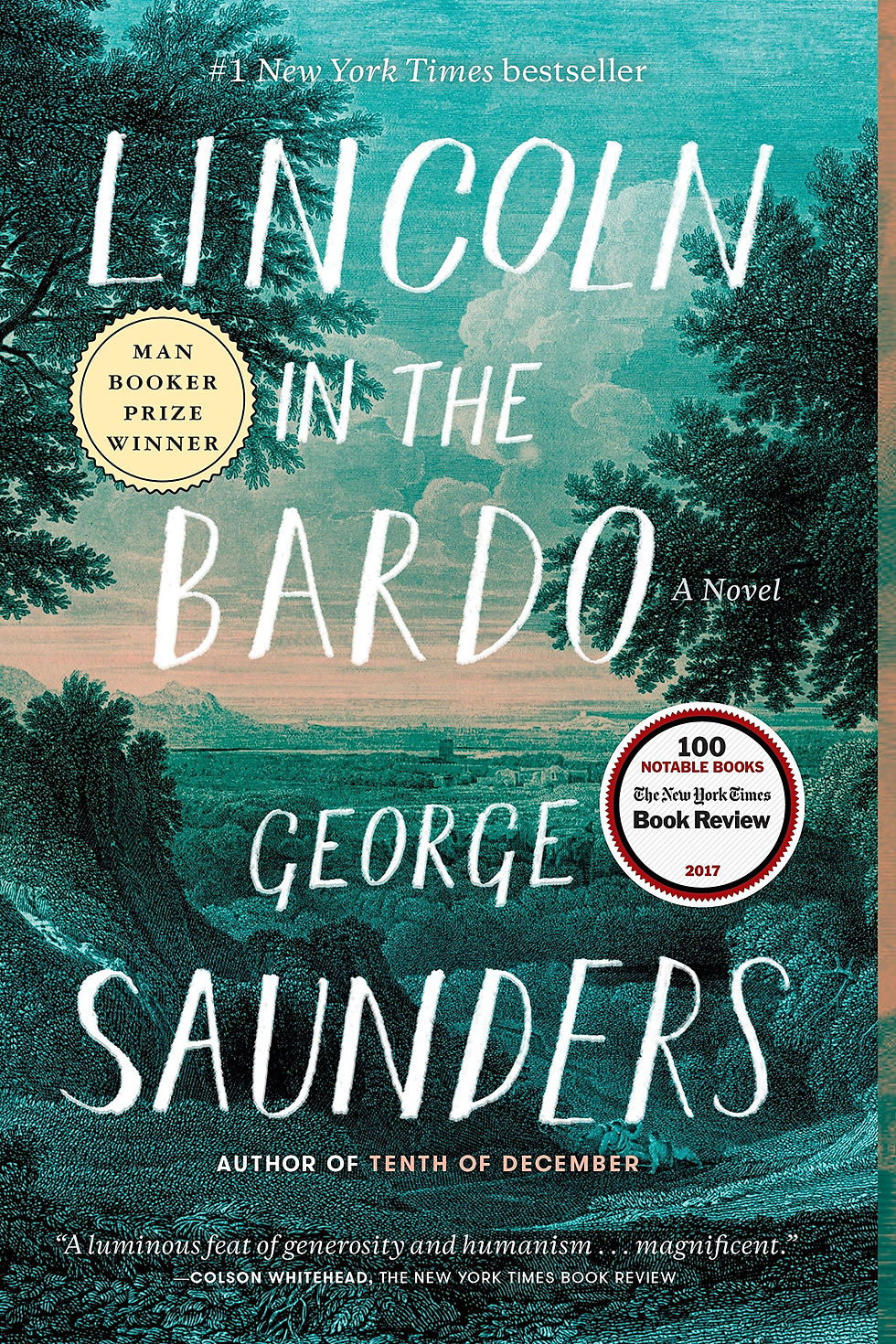
A large social reception hosted by the Lincoln couple is expected at the White House. Crews with high-ranking guests arrive. Tables are bursting with food and drinks: a Chinese pagoda, inside of which miniature chocolate fish float in a pond of sugar fibers, statues flowing with caramel. And in the room above the diplomats and ambassadors, who are making small talk, making toasts and gnawing on reindeer steaks, President Willie's eleven-year-old son is dying of typhoid fever.
“Lincoln in the Bardo,” the writer’s first novel, is a stunning depiction of the sixteenth President’s psyche.
Seized by the proximity of loss, Lincoln runs down the stairs, then descends again to maintain the decorum decency, while Willie gives his soul to God. And he does not go to hell or heaven, but to an intermediate space with talkative, not even shut up dead. Willie, along with a dozen souls, was stuck in a void inhabited by human-faced boars, burning trains and other creatures of the psychedelic world. As a Buddhist, Saunders places heroes in the bardo - a place akin to our purgatory. In the bardo, souls meet with projections of their lifetime weaknesses, appearing now as angels, now demons, now as ephemeral lumps of energy. And then there are blacks who are not given a respite even in the afterlife, and predatory tentacles growing out of nowhere. And along with all these unfortunate Willie will have to figure out how to break through the flap and finally rest.
Attempts to describe Lincoln in the Bardo almost inevitably clash with the elusive nature of the novel itself, and at the same time with its inherent ambivalence. And to describe this mimicry novel without awkward phrases like "on the one hand ... on the other hand" seems impossible. So on the one hand, this is perhaps the most experimental novel Booker has ever received. On the other hand, for a sophisticated reader who has gone through fire, water and postmodernists, Saunders' text is unlikely to offer unexplored (near) literary territories, formal or stylistic solutions.
Strictly speaking, "Lincoln" is such a monster of Frankenstein, sewn from postmodernism, Buddhist worldview and cliches of the Gothic novel. Here is a thread leading to Bardo Thedol, here is a piece of black humorists, here are scraps of cemetery poets. And at the same time "Lincoln" is a completely independent work. Again, on the one hand, somewhere we all saw this, on the other, Saunders' prose is a literary environment, dense, fresh, with a strange mystical charm. In any case, reading the book, we are amazed to see how the emaciated corpse of postmodernism is again filled with blood.
Instead of the traditional structure, Saunders turns to a mosaic, dividing the narrative into dialogues of ghosts and testimonies of contemporaries and guests of the president, excerpts from newspaper chronicles, documents and research papers.
In the first case, Saunders literally dumps on the reader an avalanche-like polyphony of the voices of the talkative dead, talking either about their backgnawing children, now about the farmer's vale, or even about sexual preferences. Like radio signals, the replicas of these unfortunate people are interrupted, superimposed on each other and, in general, rarely contain a grain of reason.
In the second case, the writer fuses genuine data about that ill-fated evening with invented ones (according to Saunders himself, 85% of them). He plays with the already familiar postulate of the subjectivity and looseness of truth; in fact, a version of the story comes out about how to tell three men a story and end up with three different variations. So, the reddish moon in some stories becomes a pale crescent in others, and the color of the president's eyes ranges from brown to gray-green.
At the same time, Saunders shoveled a mountain of research literature, read everything about Lincoln, and even walked through Oak Hill Cemetery, where the novel takes place. The author knows not only the name of the company that organized the banquet, but also the variety of flowers laid on the chest of the lifeless Willie and the names of his embalmers.
As for the fractional, completely furious style of narration, Saunders himself professes a Buddhist principle similar to automatic writing: trust in a white sheet, subconscious images and the triumph of improvisation. Funny names of the heroes are invented on the fly, in fact, as well as the mechanics of further incidents and plot twists. This is evident from the first pages, when the sedate writing quickly falls into a phantasmagoric hallucinosis.
However, to reduce the message to just an attempt to free the subconscious mind from the reality principle is to underestimate Saunders. Equally, it is a cross-section of 19th century American culture, saturated with the confrontation between slavery and the black emancipation movement, poverty and bourgeoisie, which can be considered even in sometimes incoherent dialogues. It is also a deeply lyrical mourning not only for Willie, but for all the untimely departed soldiers.
There are two impressive scenes, perhaps the most powerful in the novel. When Abraham Lincoln spends the night in his son's crypt, mourning his little body, in his remorse and grief he symbolizes the fate of all fathers during the Civil War. And the second, when the president, as it were, becomes a vessel for the ghost of the black Thomas Havens who has entered into him, with whom they "rode in the night past the sleeping houses of our compatriots." The President and the ghost in him go hand in hand, reflecting another important idea of the novel: the ability to be equal, despite racial or class differences. And, according to Saunders, this applies to both the globe and the afterlife.
This article was sponsored by Dallas Snyder.
Comments